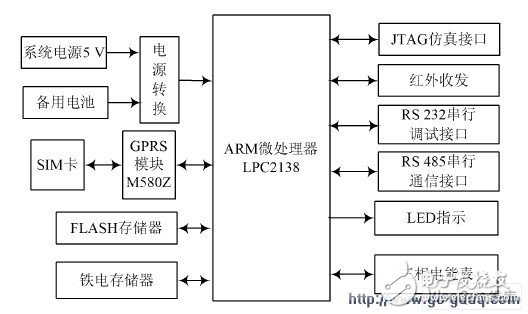With the advancement of technology, meter reading methods have evolved from traditional on-site manual readings to remote automatic systems. Today, several techniques are available for meter reading, including RS485 bus, infrared, and power line carrier communication. While these technologies are mature, they each come with limitations. For instance, RS485 requires physical wiring, increasing costs and limiting transmission distance to around 1,200 meters. Infrared-based meter reading still needs on-site personnel, and power line carrier can be affected by electromagnetic interference, which limits its range and reliability.
GPRS communication technology, on the other hand, offers a more flexible and efficient solution. It has a wide network coverage, supports continuous online connectivity, and is cost-effective. Additionally, it is not restricted by distance or physical space, making it an ideal choice for smart metering applications.
### 1. GPRS Network Energy Meter
The GPRS network energy meter integrates GPRS communication technology with traditional metering systems. It combines a three-phase multi-function energy meter with a GPRS communication module, enabling wireless data transmission. The device consists of two main components: the base meter and the GPRS communication module.
#### 1.1 Base Meter
The base meter performs all the standard functions of a conventional three-phase multi-function energy meter. It can operate independently without the GPRS module, ensuring continued functionality in case of communication failure. It samples, processes, and stores AC analog signals in real time, supporting energy measurement, demand calculation, time-of-use billing, load curve recording, data freezing, event logging, and user prepayment control. It also includes features like remote control and local display through an LCD screen. The base meter is equipped with multiple interfaces, such as RS485, infrared, and GPRS, allowing for data retrieval and configuration.
#### 1.2 GPRS Communication Module
The GPRS communication module plays a crucial role in transmitting data from the energy meter to the central system. As a standalone component, it ensures that the metering function remains unaffected while enabling reliable data communication. The downlink communication between the module and the base meter follows the DT/L645 protocol, while the uplink communication adheres to the "Power User Information Collection System Communication Protocol" (Q/GDW 376.1-2009).
This section will focus on the hardware and software design of the GPRS communication module.
### 2. Hardware Structure of the GPRS Communication Module
#### 2.1 System Block Diagram
Figure 1 shows the block diagram of the GPRS wireless communication module. The system comprises an ARM microprocessor (LPC2138), a GPRS module, FLASH and ferroelectric memory, an infrared transceiver, RS232 serial debugging interface, RS485 communication interface, JTAG simulation port, LED indicators, and a power supply unit.

**Figure 1: GPRS Network Energy Meter System Block Diagram**
#### 2.2 Module Functionality
##### 2.2.1 Microprocessor
The LPC2138 is a 32-bit ARM7TDMI-S core microcontroller with 512 KB of high-speed FLASH and 32 KB of RAM. It offers a wide range of peripherals, including timers, ADCs, DAC, PWM, GPIOs, interrupts, and a real-time clock. It also supports UART, I2C, SPI, and SSP communication interfaces, along with a vectored interrupt controller and on-chip boot loader. The processor can run at up to 60 MHz and supports low-power modes for energy efficiency.
##### 2.2.2 GPRS Module
The M580Z module from Shenzhen Youfang Technology is used, featuring a built-in TCP/IP stack and two communication channels. It uses a simplified AT command set for configuration and data transmission. The module connects to the microprocessor via a TTL-level serial port.
##### 2.2.3 Memory
To meet the requirements of the power user information collection system, the system must store different types of data, including real-time, historical, and event data. A large-capacity FLASH is used for storing curve and statistical data, while ferroelectric memory is used for real-time data and frequently updated parameters due to its unlimited erase capability.
##### 2.2.4 Serial Interfaces and JTAG Port
The module supports local configuration and maintenance via RS232 and infrared interfaces. The RS232 interface allows monitoring of the GPRS module’s status and reading/writing of data through the RS485 interface. The JTAG port is used for debugging and programming the ARM processor.
##### 2.2.5 LED Indication
LEDs indicate the power status, login status, network connection status, and power-on state of the module, providing visual feedback for troubleshooting and operation.
##### 2.2.6 Three-Phase Energy Meter
The three-phase energy meter collects and calculates electrical data such as energy, voltage, and current. It communicates with the microprocessor via a serial port, following the DT/L645 protocol. The module periodically reads data, including real-time values like power, demand, voltage, and current, and stores this information to meet the master station's access requirements.
Alumina Ceramic,Alumina Ceramic Ring,99 Alumina Ceramic Ring,Corrosion Resistance Of Alumina Ceramic Ring
Yixing Guanming Special Ceramic Technology Co., Ltd , https://www.guanmingceramic.com